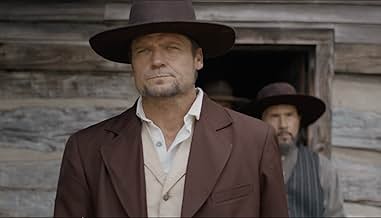A Detailed Review of the Film Sod and Stubble
Sod and Stubble is an evocative period drama adapted from the classic 1936 novel by John Ise. Set in post-Civil War Kansas during the late 19th century, the film explores the triumphs and tragedies of homesteading life on the Great Plains through the eyes of a determined immigrant couple. With sweeping cinematography and a quiet emotional strength, Sod and Stubble captures the grit, endurance, and love required to tame an unforgiving land.
The story follows Henry and Rosie Ise, a young German-American couple who leave the relative comfort of settled life to claim a piece of the Kansas prairie under the Homestead Act. Determined to build a future on land of their own, they face a hostile environment filled with natural disasters, drought, isolation, and the constant threat of failure. Yet what makes Sod and Stubble more than just a tale of survival is its human core—the evolving relationship between Henry and Rosie, and their growing family.

Rosie Ise emerges as the emotional anchor of the film. Her resilience and quiet strength are portrayed with grace and authenticity, often carrying the family through hardships when Henry's stoicism begins to falter. Her character is a tribute to the often-unsung women of the frontier—those who bore the brunt of loss, backbreaking labor, and solitude without complaint. The film gives her story the attention it deserves, painting a portrait of endurance that feels both intimate and universal.
Visually, Sod and Stubble is stunning. The cinematography captures the vastness and raw beauty of the Kansas plains with golden-hued sunsets, desolate wind-swept fields, and the dramatic shift of seasons. These natural elements are not just background—they are central characters, shaping the fate of the Ise family and reinforcing the constant tension between man and nature.

The film’s tone is deliberate and meditative, favoring realism over romanticism. It doesn't shy away from portraying the physical and emotional toll of frontier life: crop failures, sickness, death, and despair. Yet it also celebrates small victories—births, harvests, moments of laughter and connection. These highs and lows reflect the rhythms of real pioneer life, making the film feel historically grounded and emotionally sincere.
While Sod and Stubble may not offer high-paced action or melodrama, its quiet power lies in its authenticity and reverence for the past. The dialogue is sparse but effective, often relying on body language and silence to convey deep emotion. The performances are naturalistic, with actors embodying their roles with dignity and restraint.

In conclusion, Sod and Stubble is a heartfelt, beautifully crafted film that honors the legacy of American homesteaders. It is a story about more than survival—it is about commitment, sacrifice, and the human will to build something lasting from the soil. For viewers who appreciate historical drama, character-driven storytelling, and a poetic reflection on rural life, Sod and Stubble offers a deeply moving cinematic experience.



